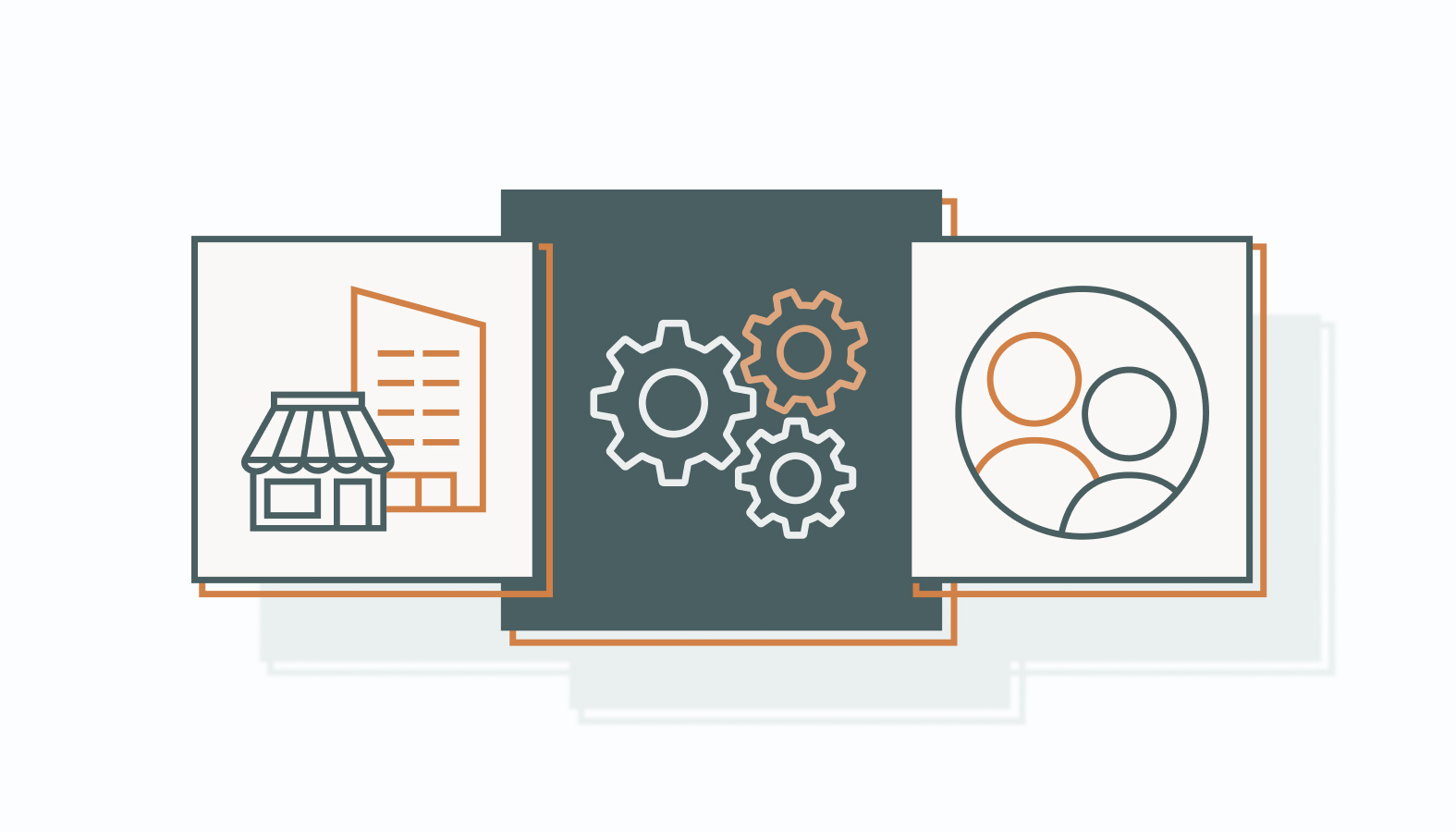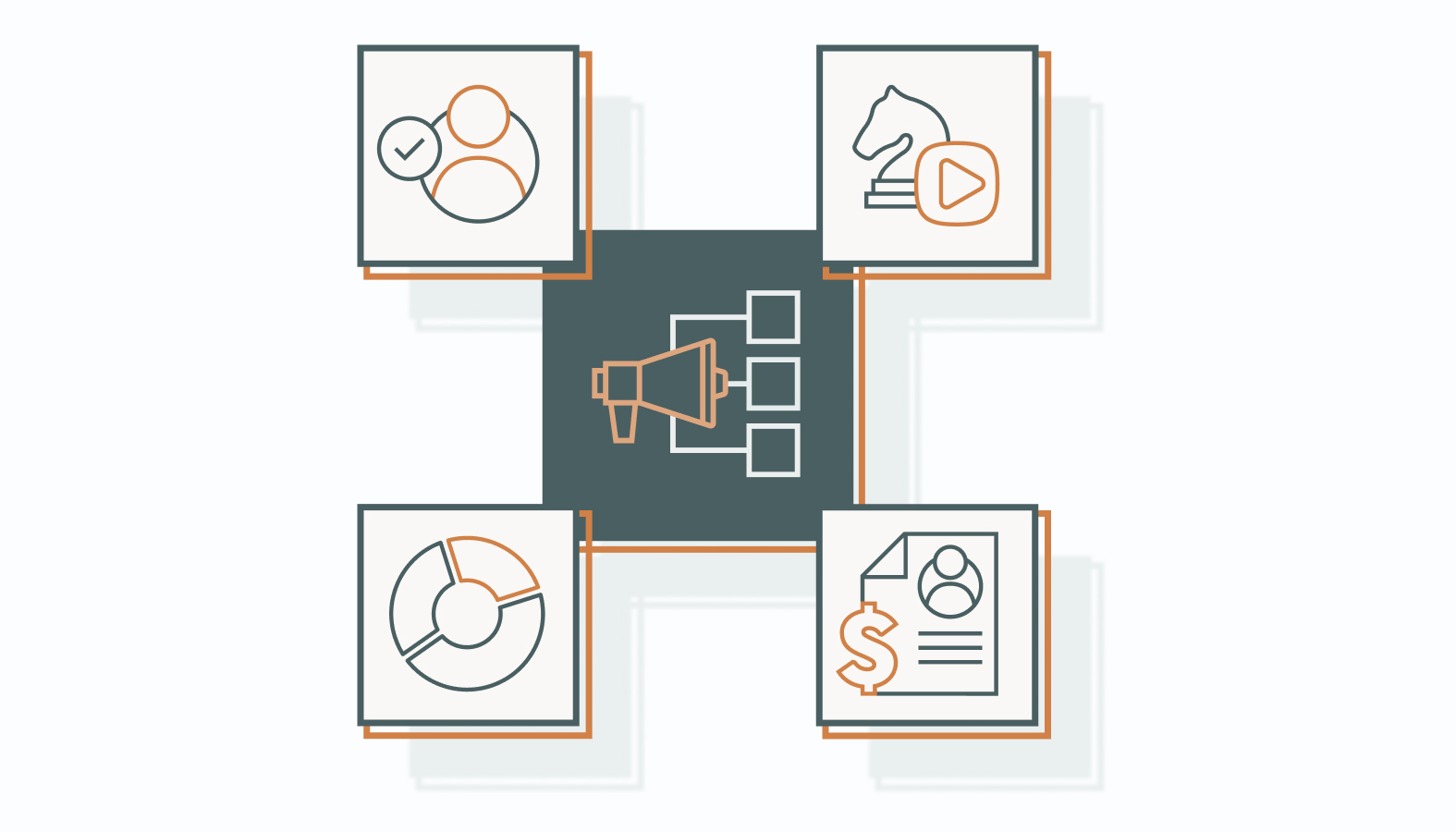You’ve probably heard the phrase “marketing automation” tossed around a lot, but what it looks like depends entirely on who you’re marketing to. In the B2B (business-to-business) world, you build relationships and guide teams toward big decisions. In B2C (business-to-consumer), it’s more like sparking instant interest and closing the deal before they scroll past.
Here’s the problem: too many businesses treat B2B and B2C marketing automation as interchangeable. They’re not. Systems, messages, timing, and even data strategies all need to work differently depending on who’s on the other side of the screen.
This guide helps you make sense of it all, so you can use automation the right way without wasting time or budget.
What is Marketing Automation? A Comprehensive Overview
At its core, marketing automation uses technology that helps marketing teams do more with less: less manual effort, less guesswork, and fewer missed opportunities. When deployed correctly, it becomes a revenue accelerator and a consistency engine.
So what exactly does it do?
Marketing automation software allows you to:
- Execute repetitive marketing tasks like email sends, social posts, and campaign workflows
- Track customer behavior and personalize messaging at scale
- Score and segment leads based on engagement and intent
- Align marketing and sales efforts through shared visibility
- Free up your team to focus on strategy and creativity
It’s not just a tool; it’s a system that orchestrates how, when, and why customers hear from you.
Why It Matters More Than Ever
In today’s high-velocity digital ecosystem, attention is fleeting, expectations are high, and marketers can’t afford to miss a beat. That’s where automation comes in.
When done right, marketing automation enables:
- Faster lead nurturing through personalized content journeys
- Stronger engagement by delivering the right message at the right time
- Improved conversion rates with better targeting and follow-up
- Scalable growth across channels, touchpoints, and customer segments
Automating marketing tasks transforms what was once a manual, one-off outreach into a synchronized customer experience from awareness to advocacy.
To stay competitive, businesses need more than just automation; they need the right kind. B2B and B2C marketing automation operate on different wavelengths; treating them the same is a fast track to wasted effort. Each demands its own strategy, tools, and timing.
Know the differences between B2B and B2C, tailor your approach, and you’ll engage smarter, convert faster, and drive results that actually move the needle.
B2B vs. B2C Marketing Automation
Effective marketing automation starts with knowing who you’re talking to. What works for a high-consideration B2B buyer may not work the same with a fast-moving B2C customer.
B2B Marketing Automation
B2B marketing automation is built to manage complexity. The sales cycle here isn’t short or simple; it’s long, layered, and usually involves multiple stakeholders with varying priorities.
Automation in this space aims to streamline how we nurture leads, run account-based campaigns, and strengthen business relationships over time.
To get it right, you need the right stack:
- CRM Systems: Platforms like Salesforce and HubSpot CRM are the central command. They track every touchpoint, helping you manage conversations and forecast outcomes with precision.
- Email Marketing Automation: Tools such as Marketo and Pardot let you tailor messages that meet your leads exactly where they are in the buying journey, whether that’s early awareness or late-stage evaluation.
- Account-Based Marketing Platforms: Demandbase and similar solutions help you zero in on high-value accounts. They equip you to create tailored messaging, ensuring every interaction feels personalized, not generic.
B2B buyers expect relevance, efficiency, and trust-building. When used strategically, automation delivers all three without burning out your team.
B2C Marketing Automation
B2C marketing automation focuses on connecting with individual consumers and quickly turning interest into conversion. Buying decisions happen fast, so the goal is to deliver personalized, high-impact experiences that scale easily.
Key features and goals of B2C automation include:
- Segmentation and Personalization: B2C teams rely on automation to break their audience into smart segments based on behavior, demographics, and preferences. The payoff is customized content that hits the mark.
- Real-Time Engagement: Instant touchpoints across social media, SMS, and push notifications to keep the experience dynamic and responsive. Automation helps brands stay close to the customer right when it matters.
Go-to tools for B2C automation include:
- Email Marketing Platforms: Mailchimp and Klaviyo are built for personalized campaigns at scale, with user-friendly interfaces and deep analytics baked in.
- E-commerce Integration: Shopify and WooCommerce connect directly with automation platforms, streamlining everything from abandoned cart sequences to personalized product recommendations.
- Social Media Automation: Tools like Hootsuite and Buffer keep the content engine running. They automate posts, manage interactions, and keep your brand consistently engaged.
When teams understand these nuances, they can build automation strategies that genuinely resonate with the consumer mindset. It’s not about adding tech for tech’s sake. It’s about leveraging the right tools to create more relevant experiences that drive real results.
Core Differences Between B2B and B2C Marketing Automation
B2B and B2C marketing automation both aim to boost engagement and drive conversions, but they operate in entirely different arenas. Think different playbooks, different opponents, and very different rules because the audience, tone, channels, and data strategies aren’t interchangeable.
Engaging the Right Audience
In B2B, engagement is a long game built on trust and value. You’re often talking to a group of decision-makers, each with their own priorities and timelines. That’s why personalized, strategic content, primarily through account-based marketing, gets results. Think precision, not volume.
B2C flips the tempo. Engagement needs to be quick, compelling, and emotionally charged. Here, it’s about grabbing attention and sparking a connection fast. Tactics like targeted emails, behavior-based recommendations, and rewards programs help keep the momentum going.
Choosing Effective Marketing Channels
Channel selection isn’t just a tactical choice. It’s a reflection of how your audience wants to interact. B2B thrives on platforms built for conversation and credibility: LinkedIn, email, and industry-specific communities. These let marketers deliver tailored, high-value messages directly to decision-makers.
By contrast, B2C plays where attention lives: social platforms like Instagram and Facebook, search engines, and marketplaces. The goal is reach, speed, and visibility. That means blending organic and paid efforts across platforms to create a seamless customer experience.
Crafting the Right Message Tone and Content
B2B content should speak the language of impact: informative, clear, and focused on ROI. Decision-makers want data, proof, and insights that solve real business challenges. Formats like case studies, white papers, and webinars build authority and trust.
In B2C, emotion drives action. Your content should entertain, inspire, or resonate. Whether it’s a clever campaign, relatable user story, or interactive video, the best B2C messaging feels personal and easy to act on.
Leveraging Data for Success
Data is the backbone of both approaches, but the application looks different. B2B marketing leans on firmographic and behavioral data to understand companies, decision flows, and key pain points. The goal is to deliver hyper-relevant messaging at every step.
B2C marketers study consumer behavior in depth, using real-time analytics to predict patterns and tailor offers. Dynamic segmentation, responsive content, and adaptive messaging make each customer feel understood and more likely to convert.
Understanding these differences gives businesses the strategic clarity to fine-tune their automation. When your approach aligns with how your audience thinks and acts, the outcomes speak for themselves.
Why B2B and B2C Need Different Marketing Automation Tools
B2B and B2C marketing automation tools serve fundamentally different purposes. The distinction isn’t cosmetic; it’s structural. How businesses interact with customers, drive conversions, and measure success varies significantly across each model and the tools needed to keep up with that pace.
In B2B, you deal with longer sales cycles, multiple decision-makers, and high-value transactions. The best automation tools here prioritize precision, patience, and personalization. Top features include:
- CRM Integration: B2B sales depend on continuity. CRM integration ensures every touchpoint, handoff, and follow-up is aligned across marketing and sales. It’s how deals stay on track and relationships stay strong.
- Lead Scoring and Nurturing: These tools do more than collect leads; they qualify and prioritize them. Smart lead scoring ranks prospects by engagement while nurturing sequences guide them toward the purchase with relevance and timing.
- Content Personalization: Effective B2B marketing meets decision-makers where they are, offering tailored insights that speak directly to their pain points, industries, or goals. It’s less about mass volume and more about high-value alignment.
B2C automation plays a different game, focusing on speed, volume, and delighting a broad consumer base across multiple touchpoints. Essential features include:
- Segmentation and Personalization: Behavioral data drives everything. These tools slice and dice your audience by preferences, habits, and timing, allowing for laser-targeted campaigns at scale.
- Real-Time Analytics: Instant insights help marketers pivot fast. If something resonates, double down. If it flops, fix it. This agility is key when consumer sentiment can shift overnight.
- Omnichannel Campaign Management: Your customer could be on TikTok at breakfast, browsing email at lunch, and scrolling SMS offers by dinner. Automation tools must coordinate messaging across all platforms without breaking rhythm.
Choosing automation tools isn’t just a checkbox exercise. B2B and B2C businesses need systems built to mirror their customer journey, marketing cadence, and success metrics. The right tool doesn’t just support your strategy; it accelerates it.
Top Strategies for Successful B2B and B2C Marketing Automation Implementation
Marketing automation delivers serious power when you know how to wield it. It sharpens personalization, unlocks deeper data insights, and provides results you can measure. But to cut through the digital clutter, you need a clear strategy that targets your audience precisely, aligns tightly with your business goals, and sparks meaningful engagement that translates to real ROI.
Captivate and Connect with Your Audience
Winning over both B2B and B2C crowds demands understanding their distinct behaviors. Personalization is your ace in both arenas, but the playbook changes:
- For B2B: Build relationships with tailored content that tackles specific business challenges. Use account-based marketing to zero in on key decision-makers. Deliver value through educational assets like webinars and white papers that position you as a trusted advisor.
- For B2C: Harness data to craft highly relevant offers and messages. Dynamic content keeps consumers engaged on a personal level. Techniques like personalized emails and loyalty programs deepen bonds and drive repeat business.
Enhance How You Deliver Content
Getting your message to the right people at the right moment is non-negotiable for engagement and conversions. Here’s how to nail it:
- Timing and Frequency: Study customer behavior to identify prime delivery windows. Avoid spamming while staying top of mind with steady communication.
- Multichannel Integration: Keep your message consistent across every channel. Use automation tools to orchestrate seamless campaigns across email, social media, and beyond, delivering a unified brand experience.
Use Data to Drive Insights
Data is your engine, powering smarter marketing moves. Use it to:
- Understand Customer Behavior: Track patterns and preferences to fine-tune targeting and personalization. Predictive analytics lets you anticipate what customers want before they do.
- Inform Strategy Development: Let insights guide your innovation and optimization efforts. Adapt your approach as markets shift to stay ahead.
Track Performance and ROI
Success demands measurable results. Here’s the game plan:
- Set Clear Metrics: Define specific goals and KPIs that tie directly to your business objectives. Choose numbers that tell a meaningful story.
- Continuous Improvement: Review performance data regularly and make adjustments. Use real results to optimize campaigns and maximize returns.
Focusing on these strategies unlocks marketing automation’s full potential. The payoff is better engagement, stronger customer relationships, and marketing results that truly move your business forward.
Mastering Marketing Automation for Real Business Impact
Marketing automation isn’t a one-size-fits-all solution. Its power lies in understanding B2B and B2C differences and tailoring strategies accordingly. Whether building trust with decision-makers or sparking quick consumer connections, targeted automation drives growth.
Remember these essentials:
- Know Your Audience: Distinct strategies meet distinct needs.
- Personalize with Precision: Relevance wins loyalty.
- Deliver Strategically: Timing and channels are critical.
- Leverage Data: Insights reveal opportunities.
- Measure Relentlessly: Track and optimize continuously.
If your automation isn’t aligned with your audience’s journey, you’re leaving value untapped. Now’s the time to adjust, engage deeper, and drive your business forward.
Ready to Elevate Your Marketing Automation?
With insights in hand, you’re poised for action. Marketing automation is most effective when customized to your challenges and goals. Our team is here to help craft a strategy tailored to your business, accelerating growth and delivering real ROI.
Schedule a straightforward, no-fluff conversation with one of our experts. We’ll listen, assess your needs, and map out practical next steps. No pressure, just clarity and results-focused guidance.
Let’s transform your marketing through targeted, high-impact automation.








